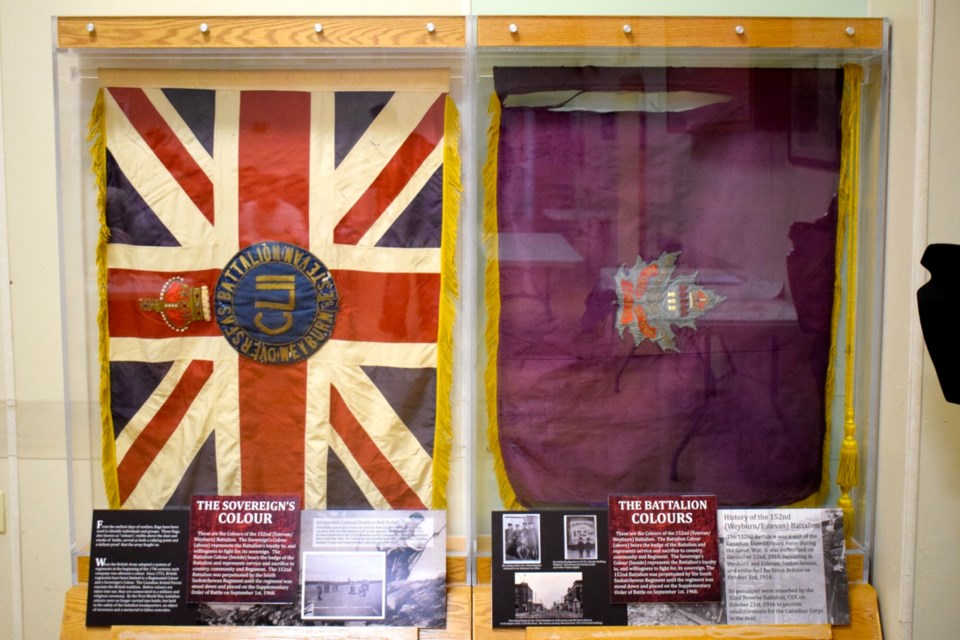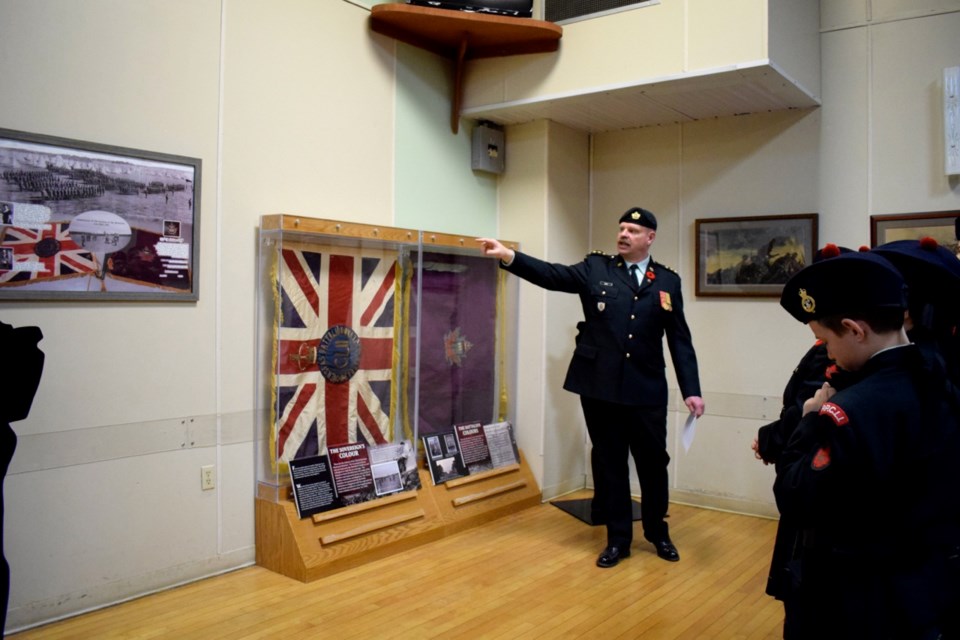The ceremony of dedication for the 152nd Battalion flags took place April 6 as part of the events to mark the 102nd anniversary of the battle of Vimy Ridge at the Estevan branch of the Royal Canadian Legion.
Captain Craig Bird, who is the commanding officer for the local No. 2901 Estevan Army Cadets, made a presentation on the history of the military unit and its flags.
He explained that through the history of warfare, flags had significant value and were used to identify individuals and groups, thus helping to understand where the enemies and friends were at the battlefields.
In the world of battles, flags were also known as colours. They had to be displayed so they would be visible above the fight’s dust and smoke and usually served as a rallying point and defiant proof that the army fought on.
In the British system starting in the mid-18th century, all regiments have been limited to a regimental colour and sovereign’s colour, and the Canadian Armed Forces emulated the British tradition.
By the beginning of the Great War, regiments wouldn’t take their battalion colours into the battle, and rather held them in safety of the battalion headquarters.
Authorized at the end of 1915, at the times of the Great War 152nd Battalion was a unit of the Canadian Expeditionary Force (CEF) and was recruiting from Estevan and Weyburn. In October 1916, the 152nd Battalion headed to Great Britain, where later its personnel joined the 32nd Reserve Battalion, CEF, and the 15th Saskatchewan Reserve to reinforce Canadian Corps in the fields.
Thus, the battalion as a whole never got up to the frontline, however, a lot of soldiers participated in frontline service.
The Estevan recruiting station for the 152nd Battalion was located on 12th Avenue and Fifth Street in Estevan in the former Empire Hotel (now the Gibby’s Pub building). The top floor of the building served as army barracks from 1914-18. All recruits were sent to the Weyburn’s exhibition grounds, where they received the initial training and later were transferred to Camp Hughes, Man.

The 152nd (Estevan/Weyburn) Battalion's colours, which are now displayed at the back of the Estevan Legion Hall, were originally presented to the Battalion at Camp Hughes in the summer of 1916 (the picture from the presentation of the flags to the Battalion is displayed at the legion as well).
The sovereign’s colour, the Union Jack, was a sign of the Battalion’s willingness to fight for the sovereign and represented its loyalty. The battalion's purple flag bore the badge of the unit itself and represented service and sacrifice to the country, community and regiment.
The flags, displayed at the Estevan Legion, came back from Weyburn, where, according to Bird, they were packed away in a case.
“We were able to get them back here into Estevan so that they could be displayed. We’ve got some plaques with some information about the battalion and some photos with regards to the battalion that are now on here. And they will be on display hopefully permanently. We are working on that still,” said Bird.
The Estevan/Weyburn 152nd Battalion was disbanded on May 21, 1917, and was proceeded by the South Saskatchewan Regiment until 1968, when the regiment was stood down and placed on the Supplementary Order of Battle.




